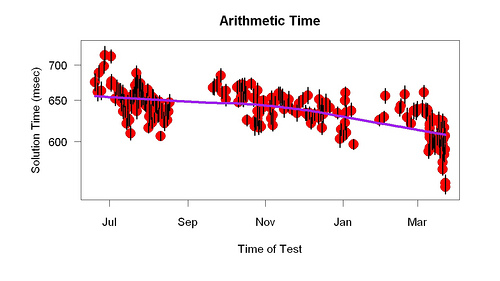I asked Brent if he had any comments on his experience (after he adopted an ancestral diet, his migraines and sinus infections stopped). He wrote:
The quality of my life (mental + physical health) improved even further when I started eating slices of butter throughout the day awhile back. For awhile, I was using spoonfuls of coconut butter/coconut oil and/or Greek yogurt for this satiation role, but once I added butter slices to the mix, I beefed up my nutritional ‘bag of tricks’ quite a bit. Of course, I had cooked in butter for a few years, but I never made the link to simply eat it in slices, despite enjoying its taste so much. And, a little bit goes a long way. I eat cultured butter from a few different brands and a few different locations of the world (hoping this diversification may carry extra beneficial side-effects: different strains of micro-organisms, etc.). I try to find brands that are pastured too (more naturally-occurring Omega-3′s, evidently). I usually suck on/chew on the butter slowly because I’ve found this has improved my oral health too: animal lipids (plus coconut oil) are good for epithelial tissue health (that’s why I rub coconut oil on my face and skin and rub butter, coconut oil, and yogurt on my hands). Pairing butter and coffee (I eat the butter; I don’t put it in my coffee; I drink my coffee black) has become a nice start to my day (Dave Lull even found a study speculating on the benefits of coupling hyperlipidity and anti-oxidants together in this way; I think it’s also a useful approach to detoxifying the liver), particularly when I know I am going to workout that morning–this little hyperlipidity kick seems to help in the gym too (when I am not fasting). Using butter slices in this manner is a nice compliment to fasting intermittently–these two practices allow me to enjoy low-caloric intake periods pleasantly. They set up my “feasts” nicely. Whenever I have a “grumbling” stomach, or I feel a “biting” sensation in my stomach, I eat a small piece of butter, and my mood and body tend to stabilize. And, like bacon and yogurt and eggs, it’s cheap. Butter has certainly been an excellent ‘cheap health option’ for me.
He later added:
Now I am working intently on Meta-Rules. Meta-Rules are simply ‘rules for making rules’ to live by. Three dynamics concern me deeply: (1) The problem of induction; (2) biochemical individuality; and, (3) factoring for the unseen. For instance, one of my nutritional Meta-Rules is: “Don’t consume anything that causes a negative physiological reaction.” From this Meta-Rule, I have deduced the following rule to live by (as one example): “Don’t consume high-fructose corn syrup.” A marker for monitoring this rule could be facial inflammation and ‘puffiness’ post-consumption, as one possibility. That’s an example of a higher-level precept empowering an individual to deduce for him or herself how that concept applies (or does not apply) in his/her own specific case (I like the term: Patient of One). Over time, I suspect that something like William Baines’ Biomedical Mutual Organization (BMO) could emerge if enough people were self-experimenting with Meta-Rules and interacting about their experiences and results. Amongst this cohort of parallel n=1 clinical trials, some convergence of Meta-Rules may occur, indicating ways that our bodies are the same, and also showing how our bodies differ individually when it comes to things like diet, exercise, and lifestyle design.
To explain why headaches can be due to inflammation, he pointed me to this.
